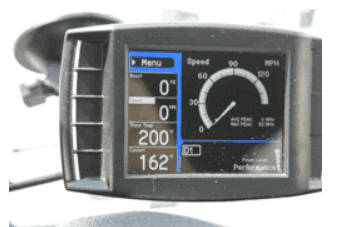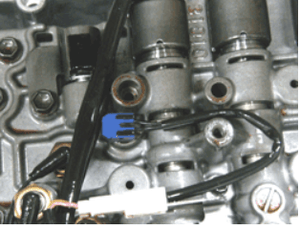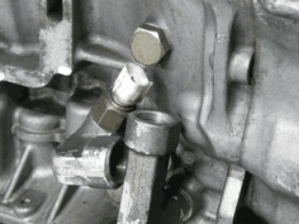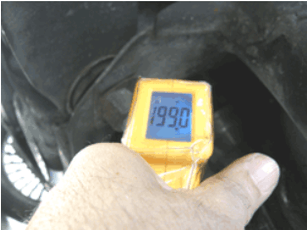Can You Feel The Heat?
Besides shift feel, shift scheduling and converter clutch control, the TFT sensor plays a role in a variety of failsafe controls which too is manufacturer dependent. Transmission temperature is critical, not only for the life of the fluid itself but it ultimately increases the life expectancy of the transmission.
| Heat is not a good thing for the engine or the transmission and so great measures are taken to control both. If the engine is overheating the converter clutch may not apply to prevent the engine from being under load. Likewise, if the transmission is overheating, the converter clutch may stay applied longer in an attempt to cool it down. Again each manufacturer has their individual programming strategies offering up different methods in accomplishing similar temperature control. |
| One of the transmissions that comes to mind which utilizes transmission fluid temperature for a variety of different reasons is the 45/545/68RFE RWD transmission in Dodge, Chrysler and Jeep vehicles. In fact the strategy used in these transmissions date as far back as 1989 when they came out with the 41TE (A604) transmission. This transmission didn’t have a TFT sensor originally so it utilized calculated in gear run time since start, ambient temperature and ECT to determine TFT. They would then place the transmission shift logic into one of the following categories: Extreme Cold, Super cold, Cold, Warm and Hot. Shift logic then varied to match the condition of the weather and the temperature of the fluid. Much of this same strategy is in the previously mentioned rear wheel drive transmissions. |
They do use a temperature sensor, which is inside the transmission range sensor. They added another shift logic category to the five just mentioned called Overheat. What is quite helpful is that Chrysler offers the description of what to expect with each of the five temperature related shift logic. Extreme cold means anything below -27° C (16° F). The transmission will have reverse, 1st and 3rd gear only in Drive, 2nd only in manual 2 or L and no converter clutch. To the extreme, “Overheat” which means TF temperatures above 115°C (240°F) or Engine Coolant above 118°C (244°F), the computer will delay the 2-3 and 3-4 up-shifts. Full converter clutch apply will only be available in 3rd gear from 30-48 mph with partial apply capabilities only above 35 mph.
| Because this is a clutch to clutch shifting transmission, adaptations are a part of the computer strategy which can be observed in data parameters called CVI, Clutch Volume Index. After repairs, there is a scan tool option called Quick Learn that allows to the computer to quickly determine the approximate volume of fluid it takes to apply a clutch. The vehicle then needs to be driven for it to fine tune quality learned shifts. For a particular objectionable shift there are specific learning procedures which must be performed according to specific temperatures. For example, the procedure to learn a smooth P/N to Drive shift must be performed with temperatures between 27-43°C (80-110°F). Yet to perform a learn procedure for a smooth up shifts temperatures need to be above 27°C (110°F). |
| There is no doubt that the TFT signal has become an intricate part of the operation of transmissions today on so many levels. As important as this sensor is, it is so often times overlooked when they malfunction and do not set a code.The variety of problems they can produce can drive you crazy. Improper clutch adaptations, line pressure control and shift scheduling are all up for grabs. Delayed engagements, late shifts, flared shifts, hard shifts, and a loss of high gear and/or TCC operation crop up and can be intermittent to boot |
Part 3 will be provided next week. We hope this was helpful. Feel free to share this info and comment below.






